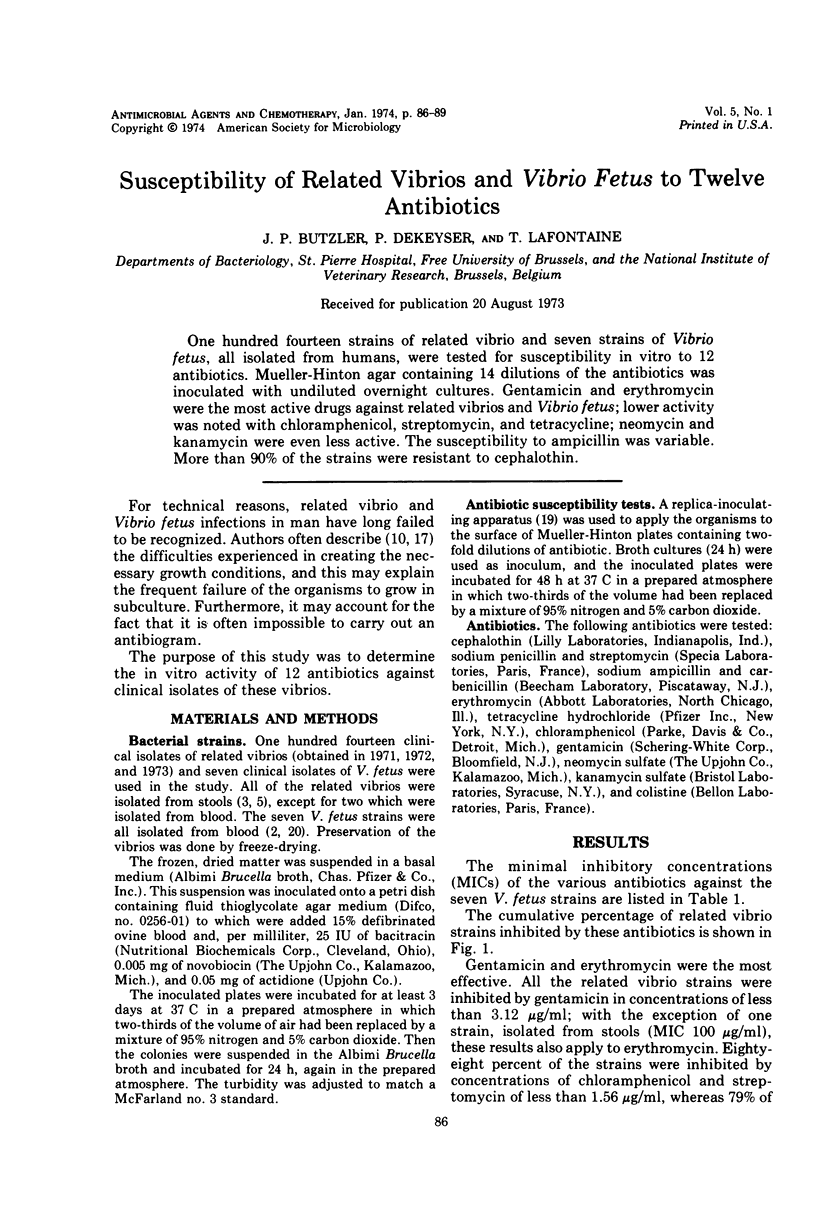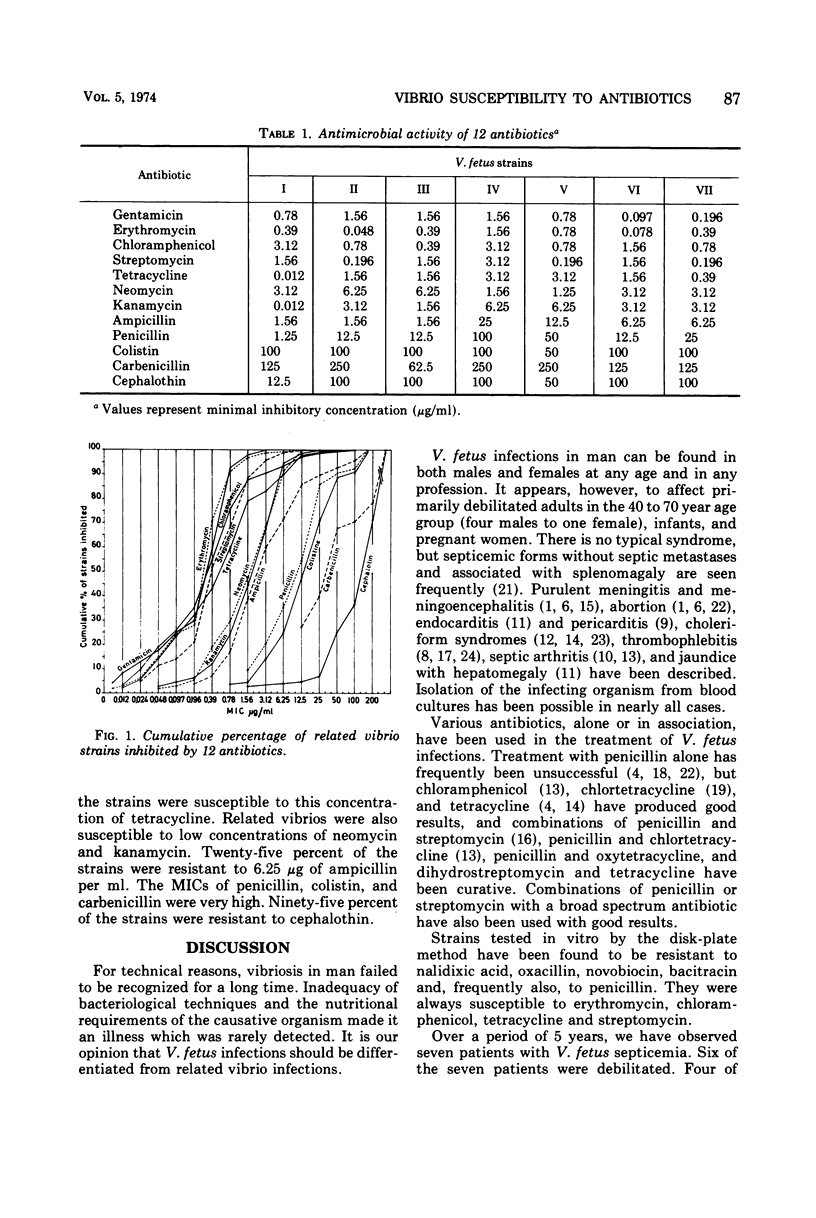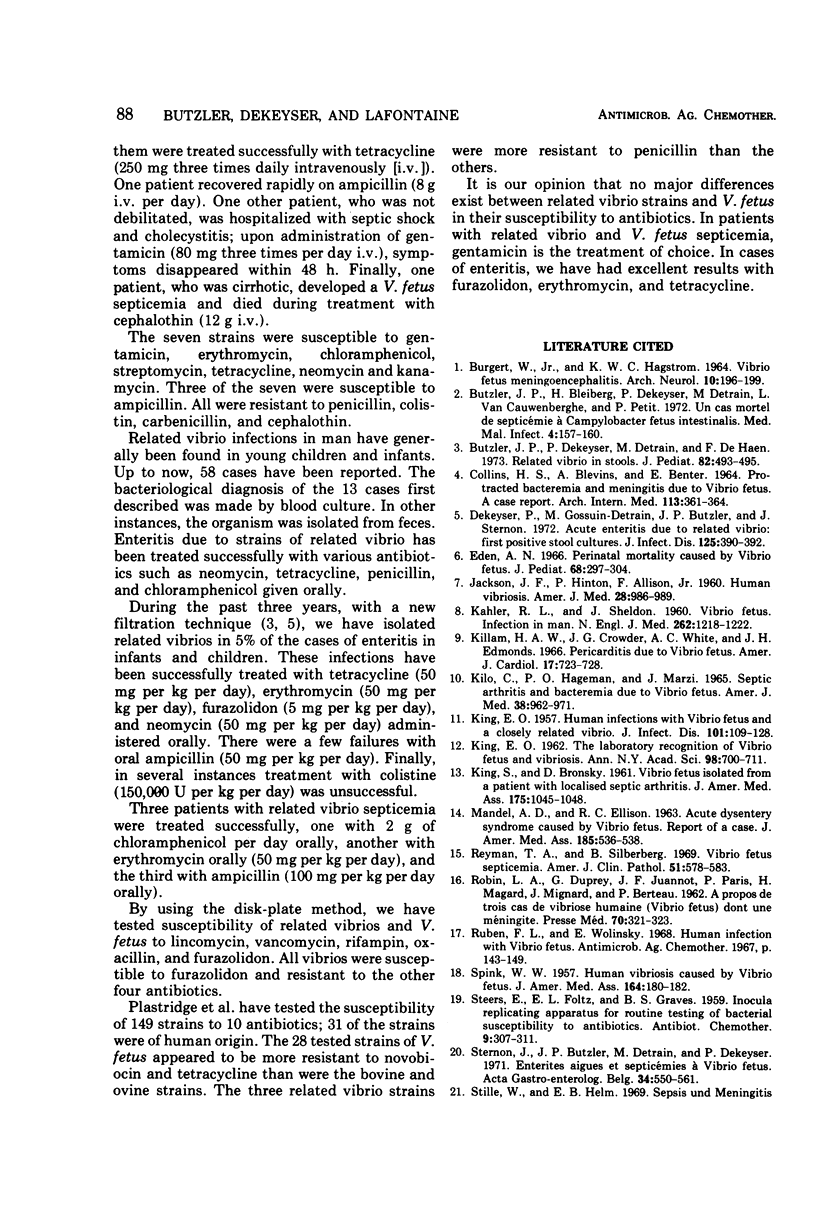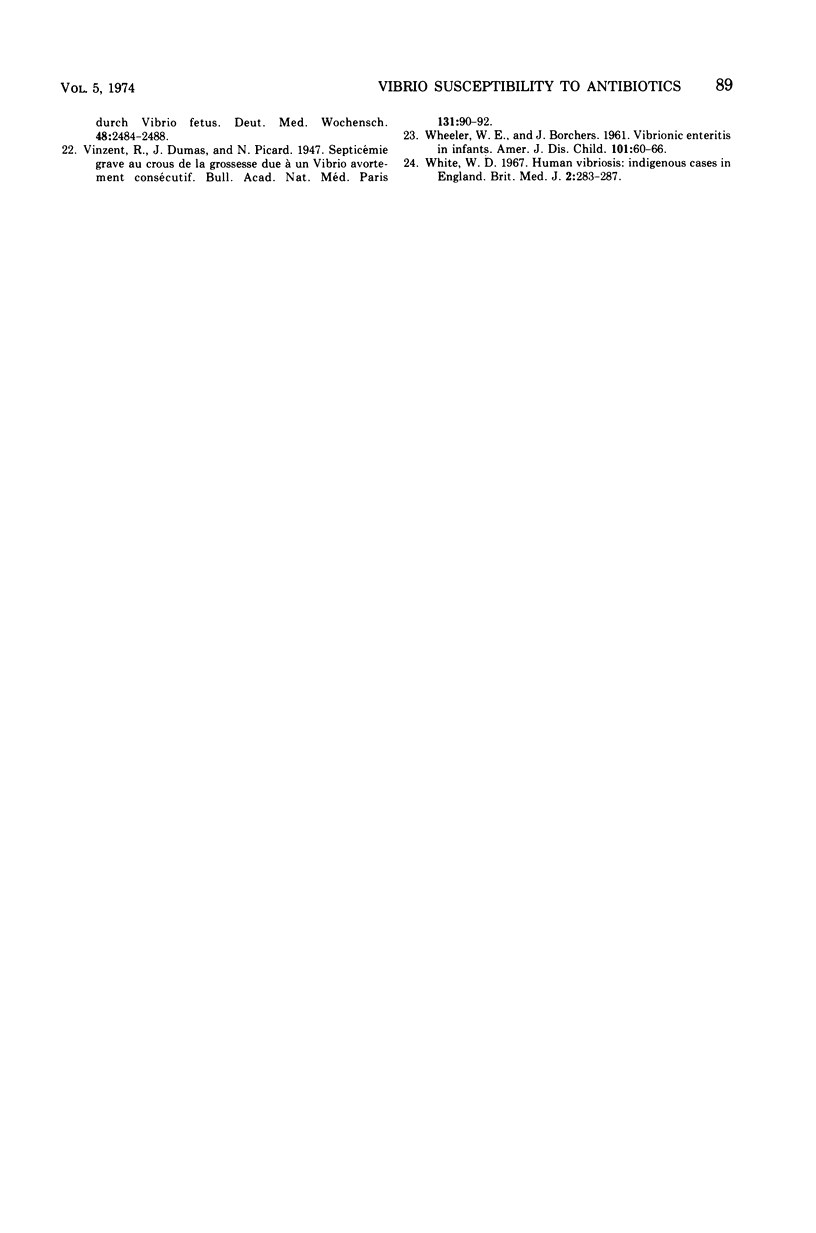Abstract
One hundred fourteen strains of related vibrio and seven strains of Vibrio fetus, all isolated from humans, were tested for susceptibility in vitro to 12 antibiotics. Mueller-Hinton agar containing 14 dilutions of the antibiotics was inoculated with undiluted overnight cultures. Gentamicin and erythromycin were the most active drugs against related vibrios and Vibrio fetus; lower activity was noted with chloramphenicol, streptomycin, and tetracycline; neomycin and kanamycin were even less active. The susceptibility to ampicillin was variable. More than 90% of the strains were resistant to cephalothin.
Full text
PDF



Selected References
These references are in PubMed. This may not be the complete list of references from this article.
- BURGERT W., Jr, HAGSTROM J. W. VIBRIO FETUS MENINGOENCEPHALITIS. Arch Neurol. 1964 Feb;10:196–199. doi: 10.1001/archneur.1964.00460140082010. [DOI] [PubMed] [Google Scholar]
- Butzler J. P., Dekeyser P., Detrain M., Dehaen F. Related vibrio in stools. J Pediatr. 1973 Mar;82(3):493–495. doi: 10.1016/s0022-3476(73)80131-3. [DOI] [PubMed] [Google Scholar]
- COLLINS H. S., BLEVINS A., BENTER E. PROTRACTED BACTEREMIA AND MENINGITIS DUE TO VIBRIO FETUS. Arch Intern Med. 1964 Mar;113:361–364. doi: 10.1001/archinte.1964.00280090047008. [DOI] [PubMed] [Google Scholar]
- Dekeyser P., Gossuin-Detrain M., Butzler J. P., Sternon J. Acute enteritis due to related vibrio: first positive stool cultures. J Infect Dis. 1972 Apr;125(4):390–392. doi: 10.1093/infdis/125.4.390. [DOI] [PubMed] [Google Scholar]
- JACKSON J. F., HINTON P., ALLISON F., Jr Human vibriosis: report of a patient with relapsing febrile illness due to Vibrio fetus. Am J Med. 1960 Jun;28:986–994. doi: 10.1016/0002-9343(60)90208-4. [DOI] [PubMed] [Google Scholar]
- KAHLER R. L., SHELDON H. Vibrio fetus infection in man. N Engl J Med. 1960 Jun 16;262:1218–1222. doi: 10.1056/NEJM196006162622404. [DOI] [PubMed] [Google Scholar]
- KILO C., HAGEMANN P. O., MARZI J. SEPTIC ARTHRITIS AND BACTEREMIA DUE TO VIBRIO FETUS: REPORT OF AN UNUSUAL CASE AND REVIEW OF THE LITERATURE. Am J Med. 1965 Jun;38:962–971. doi: 10.1016/0002-9343(65)90017-3. [DOI] [PubMed] [Google Scholar]
- KING E. O. Human infections with Vibrio fetus and a closely related vibrio. J Infect Dis. 1957 Sep-Oct;101(2):119–128. doi: 10.1093/infdis/101.2.119. [DOI] [PubMed] [Google Scholar]
- KING S., BRONSKY D. Vibrio fetus isolated from a patient with localized septic arthritis. JAMA. 1961 Mar 25;175:1045–1048. doi: 10.1001/jama.1961.03040120007002. [DOI] [PubMed] [Google Scholar]
- Killam H. A., Crowder J. G., White A. C., Edmonds J. H., Jr Pericarditis due to Vibrio fetus. Am J Cardiol. 1966 May;17(5):723–728. doi: 10.1016/0002-9149(66)90412-7. [DOI] [PubMed] [Google Scholar]
- ROBIN L. A., DUPREY G., JOUANNOT J. F., PARIS P., MAGARD H., MIGNARD J., BERTEAU P. [Apropos of 3 cases of human vibriosis (Vibrio fetus), including 1 case of meningitis]. Presse Med. 1962 Feb 10;70:321–323. [PubMed] [Google Scholar]
- Reyman T. A., Silberberg B. Vibrio fetus septicemia. Am J Clin Pathol. 1969 May;51(5):578–583. doi: 10.1093/ajcp/51.5.578. [DOI] [PubMed] [Google Scholar]
- Ruben F. L., Wolinsky E. Human infection with Vibrio fetus. Antimicrob Agents Chemother (Bethesda) 1967;7:143–149. [PubMed] [Google Scholar]
- SPINK W. W. Human vibriosis caused by vibrio fetus. J Am Med Assoc. 1957 Jan 19;163(3):180–182. doi: 10.1001/jama.1957.82970380001007. [DOI] [PubMed] [Google Scholar]
- White W. D. Human vibriosis: indigenous cases in England. Br Med J. 1967 Apr 29;2(5547):283–287. doi: 10.1136/bmj.2.5547.283. [DOI] [PMC free article] [PubMed] [Google Scholar]


